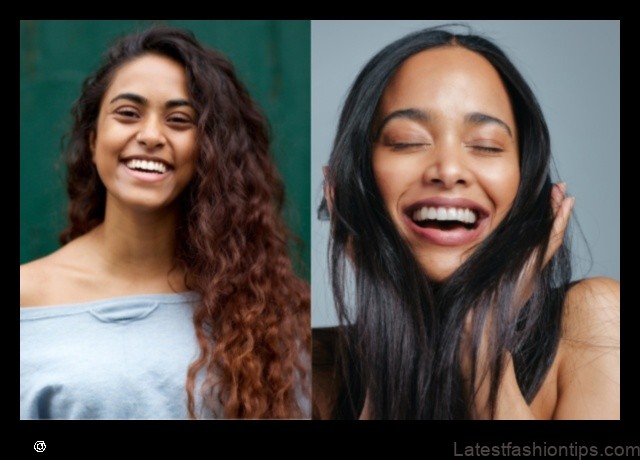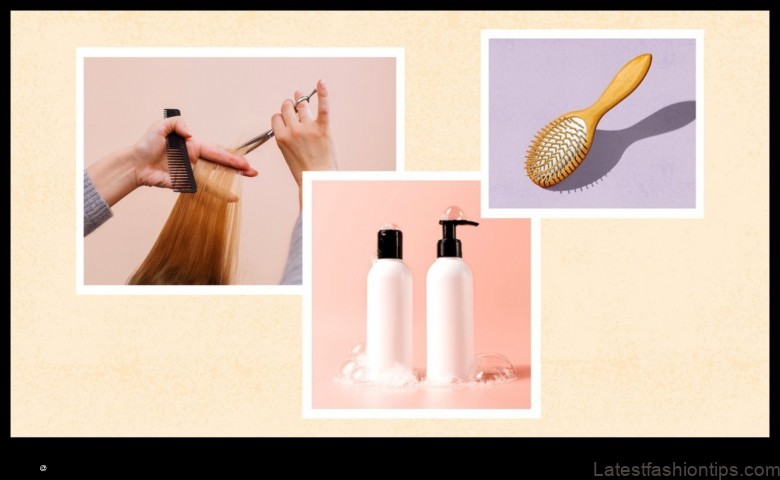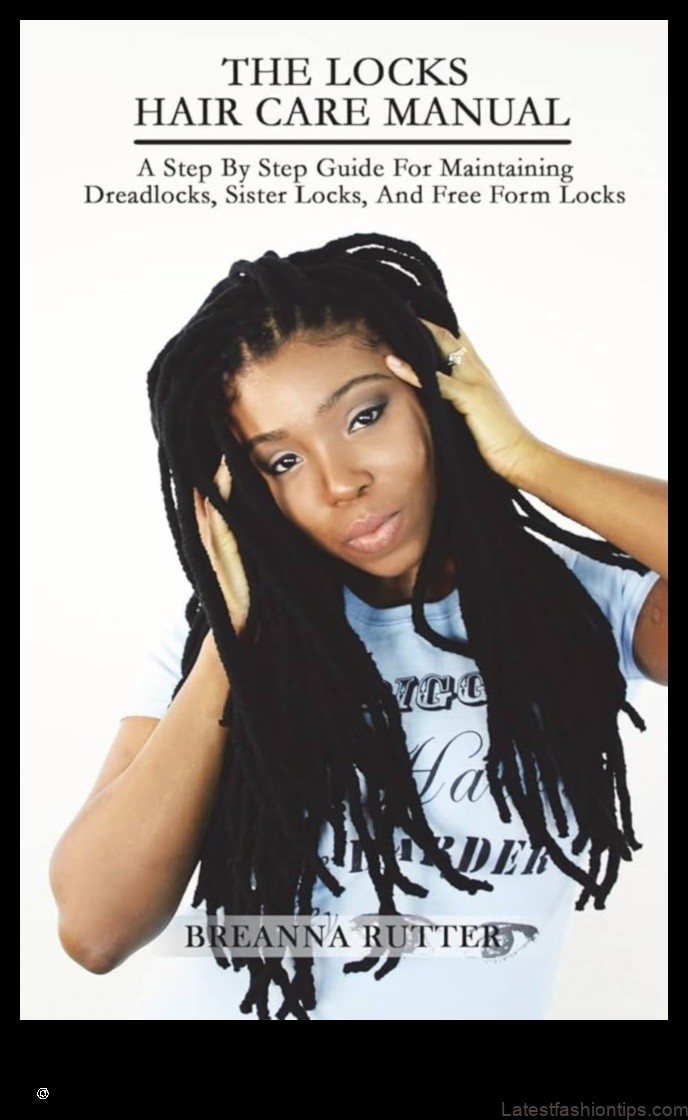
Hair Care 101: Building a Routine for Healthy Locks
This guide will provide you with the information you need to create a hair care routine that will help you achieve healthy, beautiful hair. We’ll cover everything from the basics of hair care to how to treat specific hair care issues.

The Basics of Hair Care
The first step to healthy hair is understanding your hair type. There are four main hair types:
- Straight hair
- Wavy hair
- Curly hair
- Coiled hair
Once you know your hair type, you can start to choose products and styling methods that are specifically designed for your hair.
Other important factors to consider when creating a hair care routine include your hair’s porosity and density. Porosity refers to how well your hair absorbs moisture, while density refers to how thick or thin your hair is.
By taking these factors into account, you can create a hair care routine that is tailored to your individual needs.
How to Wash Your Hair
Washing your hair is an important part of your hair care routine, but it’s important to do it the right way.
Here are a few tips for washing your hair:
- Use a gentle shampoo that is designed for your hair type.
- Wash your hair every 2-3 days, or as needed.
- Rinse your hair thoroughly with cool water.
- Avoid using hot water, as it can dry out your hair.
It’s also important to condition your hair after you wash it. Conditioner helps to restore moisture to your hair and make it more manageable.

How to Style Your Hair
The way you style your hair can also affect its health.
Here are a few tips for styling your hair:
- Use heat protectant spray before using any heat styling tools.
- Don’t over-style your hair.
- Use gentle detangling brushes and combs.
- Avoid using harsh chemicals on your hair.
By following these tips, you can help to keep your hair healthy and beautiful.
How to Protect Your Hair from Heat
Heat styling tools can be a great way to change up your look, but they can also damage your hair if you’re not careful.
Here are a few tips for protecting your hair from heat:
- Use a heat protectant spray before using any heat styling tools.
- Set your heat styling tools to the lowest setting that will give you the desired results.
- Don’t hold your heat styling tools in one place for too long.
- Take breaks in between styling sessions.
By following these tips, you can help to protect your hair from heat damage.
How to Treat Damaged Hair
If your hair is damaged, there are a few things you can do to help repair it.
Here are a few tips for treating damaged hair:
- Use a deep conditioner once a week.
- Avoid using heat styling tools as much as possible.
- Get regular trims to remove damaged hair.
- Eat a healthy diet that is rich in vitamins and minerals.
By following these tips, you can help to repair your damaged hair and restore its health.
How to Prevent Hair Loss
Hair loss is a common problem that can affect people of all ages. There are a number of factors that can
| Topic | Feature |
|---|---|
| Hair Care | The basics of hair care, how to wash your hair, how to condition your hair, how to style your hair, how to protect your hair from heat, how to treat damaged hair, how to prevent hair loss, how to choose the right hair products |
| Hair Health | How to achieve healthy hair, how to manage specific hair care issues such as dandruff or frizz |
| Hair Routine | How to build a hair care routine that will help you achieve healthy locks |
| Healthy Hair | What healthy hair looks like, how to tell if your hair is healthy |
| Hair Products | The different types of hair care products available, how to choose the right products for your hair type |
II. The Basics of Hair Care
The basics of hair care are simple:
- Wash your hair regularly with a gentle shampoo and conditioner.
- Condition your hair every time you wash it.
- Style your hair with heat protectant products.
- Protect your hair from the sun and other environmental factors.
By following these basic steps, you can help keep your hair healthy and looking its best.
III. How to Wash Your Hair
Washing your hair is an important part of your hair care routine, but it’s important to do it correctly in order to avoid damage. Here are a few tips for washing your hair:
- Use a gentle shampoo that is designed for your hair type.
- Warm your water to lukewarm before washing your hair.
- Massage the shampoo into your scalp and hair, then rinse thoroughly.
- Condition your hair after washing it.
Avoid washing your hair too often, as this can strip your hair of its natural oils. Aim to wash your hair every 2-3 days, or more often if you have oily hair.
If you have dry or damaged hair, you may want to consider using a dry shampoo between washes to help absorb oil and extend the time between washes.
IV. How to Condition Your Hair
Conditioning your hair is just as important as washing it, as it helps to restore moisture and keep your hair healthy and strong. Conditioner should be applied to damp hair after shampooing, and should be left on for a few minutes before rinsing it out. When choosing a conditioner, it is important to select one that is formulated for your hair type. For example, if you have dry hair, you will want to choose a conditioner that is rich in moisture, while if you have oily hair, you will want to choose a conditioner that is lightweight and won’t weigh your hair down.
In addition to using a conditioner, you can also help to condition your hair by using a hair mask once or twice a week. Hair masks are typically thicker and more concentrated than conditioners, and they can help to deeply hydrate and repair your hair.
Here are some tips for conditioning your hair:
- Use a conditioner that is formulated for your hair type.
- Apply conditioner to damp hair after shampooing.
- Leave conditioner on for a few minutes before rinsing it out.
- Use a hair mask once or twice a week to deeply hydrate and repair your hair.
V. How to Style Your Hair
There are many different ways to style your hair, depending on your hair type and the desired look. Here are a few tips for styling your hair:
- Use a heat protectant before using any heat styling tools. This will help to protect your hair from damage.
- Start with clean, dry hair.
- Use a styling product that is appropriate for your hair type.
- Style your hair in the direction that it naturally falls.
- Use a light touch when styling your hair.
- Don’t over-style your hair.
Here are some specific styling tips for different hair types:
- For fine hair, use a lightweight styling product and avoid using too much heat.
- For thick hair, use a stronger styling product and feel free to use more heat.
- For curly hair, use a product that will help to define your curls.
- For straight hair, use a product that will help to smooth your hair and add shine.
Once you have styled your hair, you can finish it off with a spritz of hairspray to keep it in place.
VI. How to Protect Your Hair from Heat
Heat styling can damage your hair, so it’s important to protect it from the heat whenever possible. Here are a few tips:
- Use a heat protectant spray before you style your hair.
- Set your hair dryer to a low heat setting.
- Use a curling iron or flat iron on the lowest heat setting that will give you the results you want.
- Don’t hold your hair in the heat styling tool for longer than necessary.
If you’re going to be spending a lot of time in the sun, wear a hat or scarf to protect your hair from the sun’s harmful rays.
VII. How to Treat Damaged Hair
Damaged hair is a common problem that can be caused by a variety of factors, including heat styling, chemical treatments, and environmental damage. While it is not always possible to reverse the damage, there are a number of things you can do to help improve the condition of your hair and prevent further damage.
Here are a few tips for treating damaged hair:
- Use a gentle shampoo and conditioner that is designed for damaged hair.
- Avoid using hot water when washing your hair, as this can further damage the hair shaft.
- Limit the use of heat styling tools, such as blow dryers and curling irons.
- Protect your hair from the sun’s UV rays by wearing a hat or scarf when outdoors.
- Use a hair mask or treatment once a week to help repair damaged hair.
- Get regular trims to remove damaged hair ends.
If you have severely damaged hair, you may want to consider seeing a hair stylist for professional treatment. There are a number of different treatments available that can help to repair damaged hair, such as protein treatments, keratin treatments, and hair extensions.
How to Prevent Hair Loss
Hair loss is a common problem that can affect people of all ages. There are many different causes of hair loss, including genetics, hormonal changes, medical conditions, and lifestyle factors.
If you are experiencing hair loss, it is important to see a doctor to rule out any underlying medical conditions. Once any underlying medical conditions have been treated, there are a number of things you can do to help prevent further hair loss, including:
- Washing your hair with a gentle shampoo and conditioner
- Using a hair dryer on a low setting
- Styling your hair in a way that minimizes damage
- Eating a healthy diet that is rich in protein and vitamins
- Getting regular exercise
- Managing stress
If you are concerned about hair loss, talk to your doctor about your options. There are a number of treatments available that can help to slow down or stop hair loss, and in some cases, even regrow hair.
IX. How to Choose the Right Hair Products
There are a wide variety of hair care products available on the market, and it can be difficult to know which ones are right for you. Here are a few tips to help you choose the right hair products:
- Consider your hair type.
- Consider your hair goals.
- Read the product labels carefully.
- Test the products before you buy them.
For more information on choosing the right hair products, you can consult with a hair stylist or dermatologist.
FAQ
Q: What is the best way to wash my hair?
A: The best way to wash your hair depends on your hair type and texture. For oily hair, you may want to wash it every day or every other day. For dry hair, you may only need to wash it once or twice a week.
Q: What is the best way to condition my hair?
A: Conditioner is important for helping to keep your hair hydrated and healthy. Apply conditioner to your hair after washing it, and leave it on for a few minutes before rinsing it out.
Q: How can I style my hair without damaging it?
A: When styling your hair, use heat protectant products to help protect your hair from the damage caused by heat styling tools. Also, avoid using high heat settings on your hair dryer or curling iron.
Table of Contents
Maybe You Like Them Too
- The Art of Hair A Guide to Exploring Different Hairstyles
- Short, Sweet, and Stylish A Guide to the Best Short Haircuts for Women
- Hairstyle Harmony A Modern Take on Traditional Styles
- The Life and Times of Wayne LaPierre
- The Life and Times of Steven Wright


